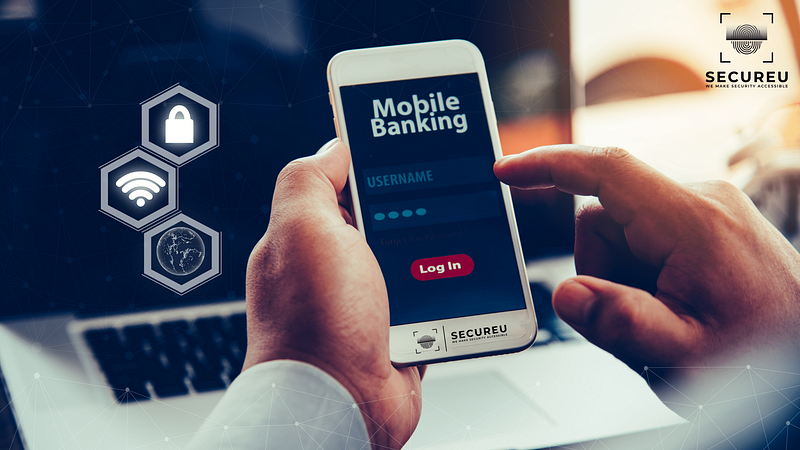Mobile devices have revolutionized the way we communicate, access information, and conduct transactions. The rise of mobile banking has made it easier for individuals to manage their finances, transfer money, and pay bills from the comfort of their homes or while on the go. However, with the convenience of mobile banking comes the risk of cyber threats that can compromise personal and financial information. In this article, we will assess the threat of using portable devices to access banking services and highlight the risks involved.
Portable devices such as smartphones and tablets have become pervasive in our daily lives. As the use of portable devices continues to grow, so do the security risks associated with them. Cybercriminals are always on the lookout for vulnerabilities in mobile devices that they can exploit to gain access to sensitive information such as login credentials, bank account numbers, and personal identification numbers (PINs).
Mobile banking is a very popular and useful feature of portable devices that enables users to perform a wide range of financial transactions such as checking account balances, paying bills, transferring funds, and even applying for loans. However, the ease and convenience of mobile banking come with risks such as malware attacks, phishing scams, and identity theft. Cybercriminals can use various tactics to gain access to mobile banking apps and compromise sensitive information.

Risks Associated with Mobile Banking
One of the most significant risks associated with mobile banking is malware. Malware is malicious software that is designed to infiltrate mobile devices and steal sensitive information such as login credentials and bank account numbers. Malware can enter mobile devices through various means such as infected apps, phishing emails, or unsecured Wi-Fi networks. Once installed on a mobile device, malware can remain undetected for a long time and can compromise sensitive information without the user’s knowledge.
Another significant risk associated with mobile banking is phishing. Phishing is a technique used by cybercriminals to trick users into providing sensitive information such as login credentials and bank account numbers. Phishing attacks can be carried out through various means such as email, text messages, and social media. Phishing attacks can be difficult to detect as they are often disguised as legitimate messages from banks or other financial institutions.
Identity theft is also a significant risk associated with mobile banking. Identity theft occurs when cybercriminals use stolen personal information to open new bank accounts or apply for loans in the victim’s name. Identity theft can result in financial losses for the victim and can also damage their credit score.
How to Mitigate the Risks Associated with Mobile Banking?
To mitigate the risks associated with mobile banking, there are several best practices that users can adopt. Firstly, users should only download mobile banking apps from trusted sources such as the Apple App Store or Google Play Store. Secondly, users should ensure that their mobile devices are always updated with the latest software and security patches. Thirdly, users should use strong passwords or biometric authentication methods such as fingerprint or facial recognition to secure their mobile devices. Fourthly, users should avoid accessing mobile banking apps on unsecured Wi-Fi networks or public computers. Finally, users should regularly monitor their bank accounts for any suspicious activity and report any unauthorised transactions to their banks immediately.
Conclusion
In conclusion, the use of portable devices to access banking services has revolutionized the way we manage our finances. However, with the convenience of mobile banking comes the risk of cyber threats that can compromise personal and financial information. The risks associated with mobile banking can be mitigated by adopting best practices such as downloading apps from trusted sources, using strong passwords or biometric authentication methods, avoiding unsecured Wi-Fi networks, and monitoring bank accounts for suspicious activity. By following these best practices, users can enjoy the benefits of mobile banking without compromising their security and peace of mind.
It is also important for banks and financial institutions to take steps to ensure the security of their mobile banking apps. Banks can implement various security measures such as two-factor authentication, encryption, and device recognition to ensure that only authorized users can access their mobile banking apps. Banks can also educate their customers on best practices for mobile banking and provide support for any security concerns. Moreover, banks can also invest in mobile device management (MDM) solutions to manage and secure mobile devices used by their employees. MDM solutions can help ensure that employees’ devices are updated with the latest software and security patches and are compliant with the organisation’s security policies. MDM solutions can also enable banks to remotely wipe data from lost or stolen devices to prevent unauthorised access to sensitive information.
To summarize, while the use of portable devices to access banking services has made our lives easier, it has also brought about security risks that cannot be ignored. By adopting best practices for mobile banking and implementing security measures, both users and banks can minimise the risks associated with mobile banking and ensure the security of their sensitive information. As the use of portable devices continues to grow, it is essential for all stakeholders to remain vigilant and proactive in mitigating the security risks associated with mobile banking.
Reach out to us today & let’s talk about how we can help you!
Website: https://secureu.in | E-mail: contact-us@secureu.in | Contact us: Instagram, Twitter Youtube & LinkedIn
